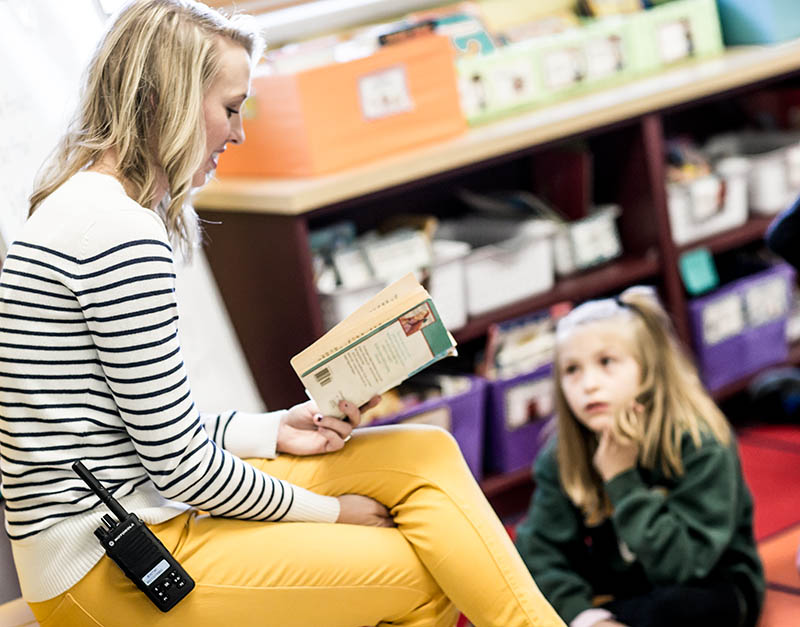From routine daily functions to emergency situations, schools can be frenetic environments that require fluid coordination and communication among faculty and staff, and in more dire circumstances, first responders. In recent years, digital technology has become more commonplace in educational institutions at all grades, and not just in academic curriculums. Unified communications (UC) and other digital solutions can promote student safety by letting teachers and administrators share information more quickly in a crisis to be more aware of what’s taking place on campus, while also making it easier to coordinate simple day-to-day activities such as bus pickup and drop-off, or monitoring a student’s trip to the nurse’s office. Creating a safe, high-functioning and connected school environment is priority No. 1 for parents and teachers, and a well-integrated series of digital technologies can help achieve this goal. 
Communicate Seamlessly With Integrated UC
According to a comprehensive survey conducted by Motorola, two-way radio is used by 30% of schools for coordinating daily activities, whether that’s switching classrooms, communicating with bus drivers or getting in touch with custodial staff. By comparison, 17% of respondents said they use mobile phones. Traditionally, two-way-radio and cellular communications have been entirely separate. But this has changed with the rollout of UC solutions such as Motorola WAVE, which allows smartphone users to communicate with MOTOTRBO two-way radio users via a push-to-talk (PTT) digital application. Two-way radio shouldn’t necessarily be replaced by smartphones—they’re more rugged, more reliable, provide better audio and boast longer battery life than their digital counterparts. Conversely, smartphones can do a lot of things that two-way radios can’t. Their range extends off-campus, which makes them ideal for teachers and parents chaperoning students on field trips. You can dial 9-1-1 with a smartphone, send group text messages, check email, etc. The purpose of UC is to merge the best of both worlds into an integrated system that enables communication across all platforms. This makes features such as “All Call” possible. In the event of a crisis, an authorized WAVE app user or two-way radio user can instantly broadcast an emergency message to every other user in the school with this feature, accelerating actions to help resolve a situation and keep students safe. Alternatively, users can set up talk groups across communication platforms that enable PTT with certain people at any given time, through any device.
Prevent a Situation From Escalating With Video Analytics
Surveillance systems are not new in schools, but their presence has become more ubiquitous in recent years, according to District Administrator. More importantly, their utility has evolved thanks to video analytics that can autonomously recognize and flag certain activities. One example is Avigilon’s video analytics technology, which analyzes footage in real time for indicators of suspicious or potentially alarming activity. For instance, self-learning analytics can detect someone loitering around school entryways, and flag that event for security staff or administrators, who can then investigate. This type of functionality can help detect activities that someone sitting in front of a row of monitors could easily miss. Video analytics represent a fundamental shift in surveillance as a reactive resource to a proactive tool for school safety, specifically by recognizing “interesting” events—whether it’s a suspicious person, someone being where they’re not supposed to be, a slip and fall in a stairwell, or something else. Detecting any of these early warning signs can help defuse a situation before it even happens or, at the very least, begin responding the moment the event occurs.
Respond Swiftly and Document the Incident
The minutes immediately following the detection of an emergency situation—or a potential emergency—can have a tremendous impact on the outcome. Fluid internal communications between faculty and staff through All Call and talk groups in a crisis or school lockdown is crucial, but so is the ability to have a constant and direct line of communication with officials responding to the scene. Smartphones represent one method to achieve this, but the same capability is also necessary, and arguably more effective, when it can be used as a PTT function via two-way radios. Sometimes, the steps taken after an incident occurs are crucial to understanding how and why it happened, who was involved and what measures can be taken to prevent a future occurrence. To this end, schools can leverage cloud-based incident management software that integrates with core communication systems including smartphones and two-way radio devices, but also video surveillance systems. Ally from Motorola solutions helps complete the incident management cycle by making it easy to capture, search, archive and report incident data from all of the aforementioned communication sources. This information can be as banal as documenting a student who took liberties with his hall pass and was caught wandering around the band room, or as serious as logging incident data when there’s a fire in the cafeteria or an active shooter reported on campus. Either way, incident management software brings the data together under one case file that can be accessed for preventative purposes (such as in an investigation into something suspicious), or after an event has already occurred. When used in a sequence, integrated communication and surveillance technologies complement one another. The result is better coordination among faculty, staff, students and first responders, quicker incident response and, most importantly, safer schools.